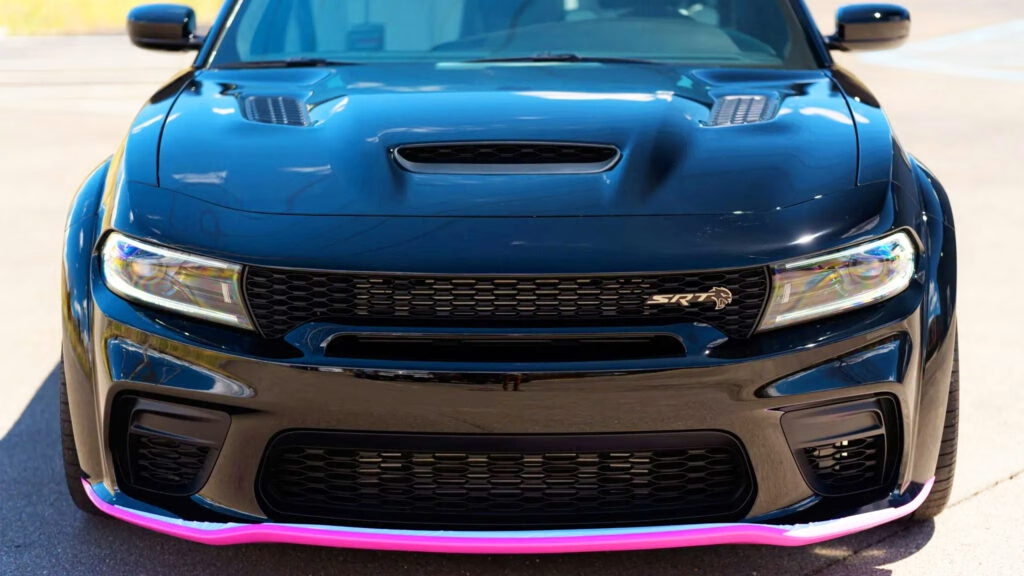The Dodge Charger SRT Hellcat Redeye Widebody Jailbreak Last Call is a beast of a car, boasting a 6.2-liter supercharged V8 engine that churns out a staggering 807 horsepower and 707 lb-ft of torque. This muscle car is not just about raw power; it’s a statement on wheels, especially when you consider its sleek Pitch Black exterior paired with striking 20-inch lightweight black wheels. But as the market shifts, the allure of these high-performance vehicles is being tested in ways we haven’t seen before.
What’s Happening with the Last Call Models?
Dodge’s ‘Last Call’ series was supposed to be a grand farewell to gas-powered muscle cars, creating a buzz that would send collectors and enthusiasts into a frenzy. However, recent auction results tell a different story. For instance, a nearly new Charger SRT Hellcat Redeye recently sold for $85,000—well below its original sticker price of $101,305. While that’s still a significant amount, it raises eyebrows for those hoping to make a quick profit flipping these cars.
This particular Charger had only 16 miles on the odometer when it hit the auction block on Bring a Trailer. It was a prime candidate for a flip, but it seems the market isn’t as hot as expected. The selling dealer likely anticipated a higher return, but the reality of the situation is that the hype surrounding these models has cooled considerably.
Why Are Prices Dropping?
Several factors contribute to this decline in value. For one, the market for muscle cars has become increasingly saturated. With multiple Last Call models hitting the market, buyers have more options than ever, which can drive prices down. Additionally, the shift towards electric vehicles (EVs) is reshaping consumer preferences. As Dodge gears up for a new generation of electric Chargers, traditional muscle car buyers might be reassessing their priorities, leading to a more cautious approach when it comes to purchasing gas-powered vehicles.
Moreover, the overall economic climate plays a role. With rising interest rates and inflation affecting disposable income, potential buyers may be more hesitant to invest in high-ticket items like a Hellcat. The thrill of owning a powerful muscle car is still there, but the financial realities are prompting many to think twice.
What Makes the Charger Hellcat Special?
Despite the market fluctuations, the Charger SRT Hellcat Redeye remains an impressive machine. Its performance is unmatched, especially when you consider the sheer power it delivers. The 807 hp engine is designed to thrill, making it a joy to drive for those who appreciate speed and performance. The interior, while not as luxurious as some European competitors, offers a sporty feel with high-quality materials and a design that reflects its muscle car heritage.
The Charger’s understated look—especially in Pitch Black—might make it less flashy, but it still commands attention with its aggressive stance and performance-oriented features. The interior is equipped with comfortable seating and modern tech, making it a practical choice for those who want both performance and everyday usability.
Looking Ahead: What’s Next for Muscle Cars?
As we look to the future, it’s clear that the muscle car landscape is changing. With Dodge’s pivot towards electric vehicles, the question remains: will traditional muscle cars like the Charger and Challenger continue to hold their value? Or will the shift to EVs redefine what it means to be a performance vehicle?
The answer might lie in how well manufacturers can blend the thrill of driving with the sustainability that modern consumers are beginning to demand. It’s a balancing act that will require innovation and a keen understanding of the market.
The big takeaway? The muscle car era isn’t over, but it’s evolving. For enthusiasts, this means staying informed and adaptable. Whether you’re looking to buy, sell, or simply enjoy the ride, understanding these market dynamics will help you navigate the changing landscape. Start with one change this week, and you’ll likely spot the difference by month’s end.

